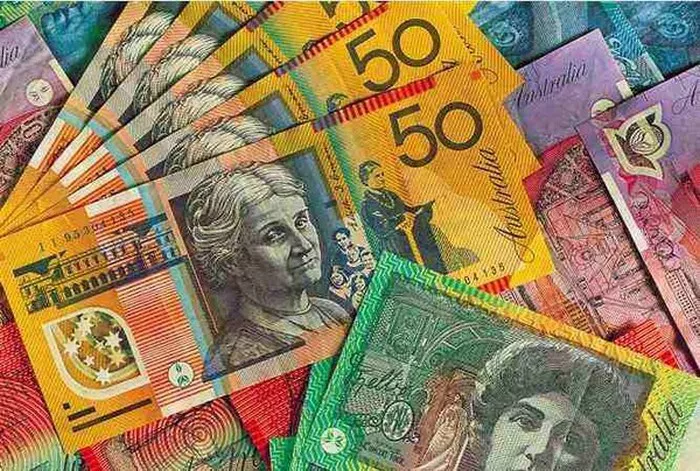The Australian Dollar (AUD) has long been considered a robust and resilient currency, backed by a strong economy, abundant natural resources, and a stable political landscape. However, in recent years, the AUD has exhibited signs of weakness, causing concerns among investors and financial experts. This article delves into the complex web of factors contributing to the weakening of the Australian Dollar, shedding light on the intricacies of the currency’s fluctuations.
Global Economic Factors
One of the primary drivers behind the weakening of the AUD is the global economic landscape. The Australian economy is highly dependent on international trade, and external economic events play a significant role in determining the currency’s strength. Several key factors in the global economy have a substantial impact on the AUD’s performance:
a. US Federal Reserve Policies
The monetary policies of the United States Federal Reserve have a profound influence on the AUD. Historically, when the Federal Reserve raises interest rates, it tends to attract capital away from Australian markets and into the US, leading to a stronger US Dollar (USD) and a weaker AUD.
b. Commodity Prices
Australia is a major exporter of commodities such as iron ore, coal, and natural gas. Fluctuations in global commodity prices can significantly affect Australia’s export revenues and, subsequently, the AUD. A drop in commodity prices can lead to a decrease in demand for the AUD, contributing to its weakness.
c. Global Economic Uncertainty
Geo-political conflicts, trade disputes, and the uncertainty surrounding international events can erode investor confidence. During periods of heightened global economic uncertainty, investors tend to favor safe-haven currencies like the US Dollar, further weakening the AUD.
Domestic Economic Factors
While the global economy exerts a considerable influence on the AUD, domestic economic factors play an equally pivotal role in its value:
a. Interest Rates
The Reserve Bank of Australia (RBA) sets domestic interest rates, which can affect the AUD. When the RBA lowers interest rates to stimulate economic growth, the attractiveness of the AUD to investors diminishes. Lower interest rates can lead to capital outflows and a weaker AUD.
b. Inflation
The level of inflation in Australia can influence the AUD. If inflation rates rise, the real value of the AUD decreases. In response, investors may choose to move their funds into other currencies with stronger purchasing power, further weakening the AUD.
c. Economic Performance
The overall economic health of a country plays a critical role in determining the strength of its currency. Australia’s economic performance, as measured by indicators such as GDP growth and employment rates, can affect investor sentiment and, consequently, the AUD’s value.
Currency Market Dynamics
Currency markets are highly sensitive to supply and demand dynamics, and market sentiment can rapidly affect the AUD:
a. Speculation
Currency traders and speculators can influence the AUD’s value through short-term trades. Speculative activities, driven by market sentiment and economic data releases, can lead to sudden fluctuations in the currency’s exchange rate.
b. Carry Trade
Investors often engage in carry trades, where they borrow money in a currency with low-interest rates and invest it in a currency with higher interest rates. Australia’s historically high-interest rates have made it an attractive choice for carry traders. However, when interest rates drop, it can reduce the attractiveness of the AUD for such trades, leading to a weakening of the currency.
Trade Balance
Australia’s trade balance, which measures the difference between exports and imports, is another significant factor in the AUD’s performance. A trade surplus, where exports exceed imports, can boost the AUD by increasing demand for it in international trade. Conversely, a trade deficit can lead to a weaker AUD.
Political Stability
Political stability is often an overlooked factor but can significantly affect a country’s currency. Australia’s stable political environment has traditionally contributed to the AUD’s strength. However, changes in government policies or political uncertainty can undermine investor confidence and weaken the currency.
Natural Disasters
Australia is prone to natural disasters, including bushfires, floods, and cyclones. These events can disrupt economic activities, damage infrastructure, and strain government resources. The associated costs and uncertainties can contribute to a weaker AUD.
Conclusion
The weakening of the Australian Dollar is a complex interplay of global and domestic economic factors, currency market dynamics, trade balance, political stability, and natural disasters. While the AUD has historically been a strong and resilient currency, it is not immune to the myriad forces that shape the world of finance.
Investors and policymakers must remain vigilant and adaptable in response to these factors to navigate the fluctuating landscape of the Australian Dollar. As the global and domestic economic environment continues to evolve, it is essential to stay informed and make informed decisions to mitigate risks and capitalize on opportunities in currency markets.


